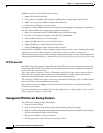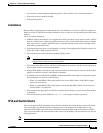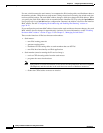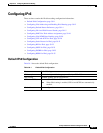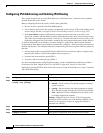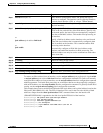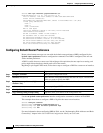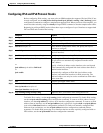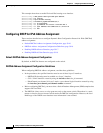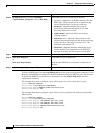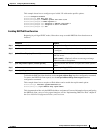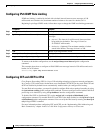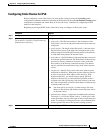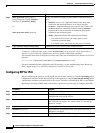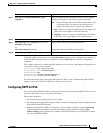
39-16
Catalyst 3750 Switch Software Configuration Guide
OL-8550-09
Chapter 39 Configuring IPv6 Unicast Routing
Configuring IPv6
This example shows how to enable IPv4 and IPv6 routing on an interface.
Switch(config)# sdm prefer dual-ipv4-and-ipv6 default
Switch(config)# ip routing
Switch(config)# ipv6 unicast-routing
Switch(config)# interface gigabitethernet2/0/1
Switch(config-if)# no switchport
Switch(config-if)# ip address 192.168.99.1 244.244.244.0
Switch(config-if)# ipv6 address 2001:0DB8:c18:1::/64 eui 64
Switch(config-if)# end
Configuring DHCP for IPv6 Address Assignment
These sections describe how to configure Dynamic Host Configuration Protocol for IPv6 (DHCPv6)
address assignment:
• Default DHCPv6 Address Assignment Configuration, page 39-16
• DHCPv6 Address Assignment Configuration Guidelines, page 39-16
• Enabling DHCPv6 Server Function, page 39-17
• Enabling DHCPv6 Client Function, page 39-19
Default DHCPv6 Address Assignment Configuration
By default, no DHCPv6 features are configured on the switch.
DHCPv6 Address Assignment Configuration Guidelines
When configuring DHCPv6 address assignment, consider these guidelines:
• In the procedures, the specified interface must be one of these Layer 3 interfaces:
–
DHCPv6 IPv6 routing must be enabled on a Layer 3 interface.
–
SVI: a VLAN interface created by using the interface vlan vlan_id command.
–
EtherChannel port channel in Layer 3 mode: a port-channel logical interface created by using
the interface port-channel port-channel-number command.
• Before configuring DHCPv6, you must select a Switch Database Management (SDM) template that
supports IPv4 and IPv6.
• The DHCPv6 client, server, or relay agent runs only on the master switch. When there is a stack
master re-election, the new master switch retains the DHCPv6 configuration. However, the local
RAM copy of the DHCP server database lease information is not retained.



